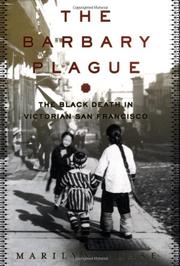

THE BARBARY PLAGUE
The Black Death in Victorian San Francisco
by Marilyn Chase
Real-life medical thriller providing a slice of history we don’t want to repeat.
The bubonic plague threatened San Francisco for a decade at the turn of the century. In her debut, Wall Street Journal reporter Chase documents how federal authorities put an end to the epidemic. Public health disasters can only be averted, she learned from her research, if local, state, and federal health agencies work together. When the plague arrived in 1900, racism against Chinese immigrants, its initial victims, kept federal health inspectors from documenting and instituting measures to eradicate the scourge. Then boosters in the Golden State’s railroad and agricultural industries stymied federal decontamination efforts, because they didn’t want anything to impede California trade. Finally, disputes in Washington agencies bogged down the cleanup. Chase’s narrative focuses on two pioneers in American public health, Joseph Kinyon and Rupert Blue, to convey the difficulty of overcoming the public’s ignorance about how the plague spread and the importance of education and a good public relations campaign in saving lives. If San Franciscans had listened to self-righteous and rough-edged Kinyon instead of running him out of town on a rail, they would never have needed the brilliant and diplomatic Blue, who saved the city from mass death in the wake of the Great Earthquake, which drove hordes of plague-bearing rats out of their warrens in 1906. Much space is devoted to old-time medicine—rudimentary testing for plague bacteria, transferring blood samples from a human corpse to a guinea pig, inoculating people with serums derived from horses—and sometimes these scenes make for a plodding read. But usually there’s satisfaction to be found in being lost in Chase’s narrative. Blue’s meticulous cleanup campaign provides plenty of color as he burns down entire city hospitals and cleans up slaughterhouses teeming with rodents.
Armchair historians, San Francisco-philes, and doctors interested in their profession’s past will find this particularly gripping.